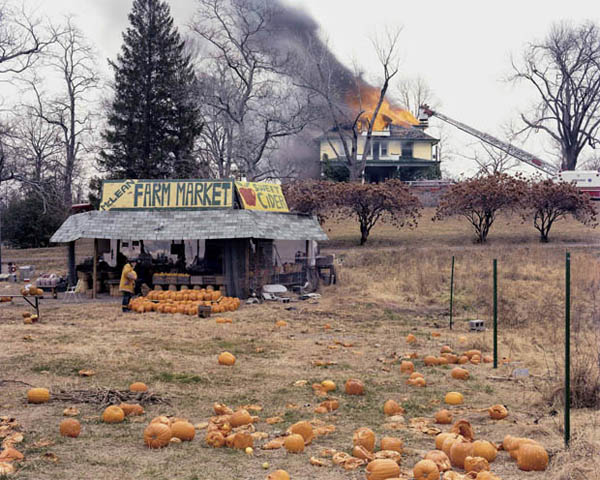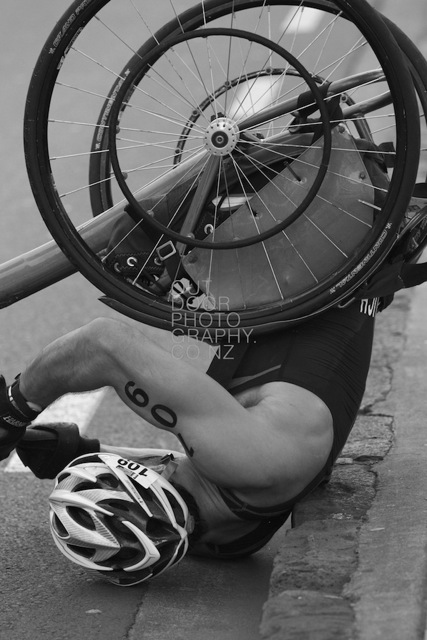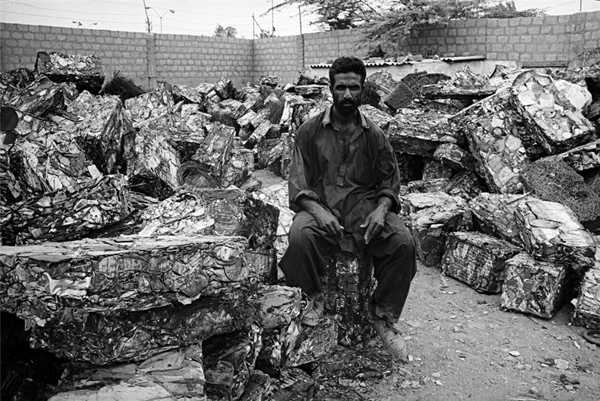Share
Friday Happy Hour: The Problematic Nature of Photography & More
Much of the photo world has turned its attention to PhotoPlus in New York this week, but as always the Internet prevails, and we found plenty of ge...
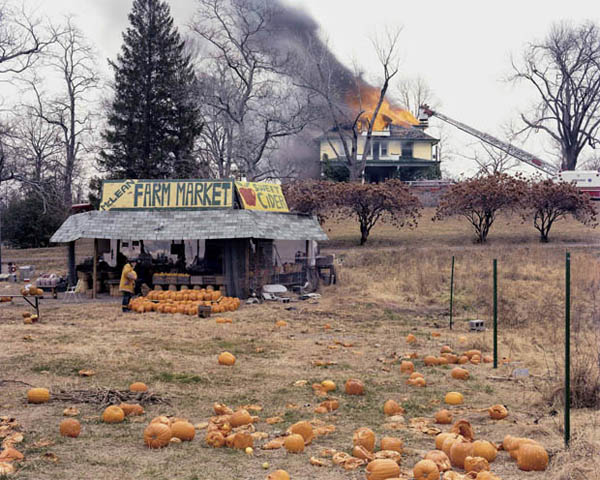
Much of the photo world has turned its attention to PhotoPlus in New York this week, but as always the Internet prevails, and we found plenty of gems in the blogosphere. Here are a few favorites.
Joel Sternfeld: the problematic nature of photography
Forbes had an interesting piece on the problematic nature of photography last month that slipped by us, but thanks to PetaPixel it’s circulating around again. The editorial drew on Joel Sternfeld’s iconic photograph of a fireman pumpkin-picking while a house burns in the background.
What the photo doesn’t tell you is that the fire was a training exercise and the pumpkin-picker was just a fireman taking a break. “No individual photo explains anything,” Sternfeld has often been quoted. “That’s what makes photography such a wonderful and problematic medium.”
Years ago, everything captured in camera was accepted as fact – today we assume everything is contrived. At Luminance 2012 we heard from Photoshop devotee turned detector Kevin Connor, whose new software helps detect image manipulation. He asks us the simple yet wildly complicated question, has trust in photography declined? Check out the video of his talk for more: photoshelter.com/luminance/videos/connor
You’re not the only photographer at the wedding anymore
Connecticut wedding photographer Richard Eposito has some news: you’re not the only photographer at the wedding anymore.

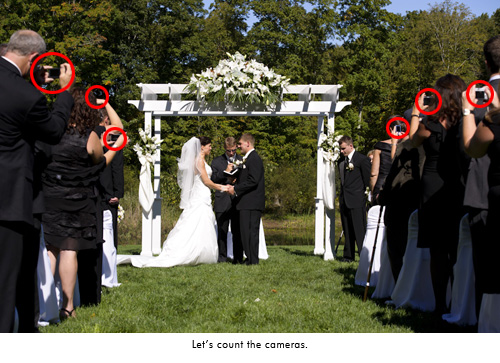 “Gone are the days of capturing a sea of guests with genuine emotion on their faces,” he wrote in a guest post on Tiffinbox. “Now you have to give an elbow to Aunt Clair who’s blocking the aisle with her Digital Rebel in hand as the bride makes her grand entrance.” Eposito goes on to talk about how professionals must compete with more and more amateurs, and still convince clients to pay $3-10K for a photographer. In fact, he quotes Market Watch saying that wedding photographers are some of the most overpaid professionals in America.
“Gone are the days of capturing a sea of guests with genuine emotion on their faces,” he wrote in a guest post on Tiffinbox. “Now you have to give an elbow to Aunt Clair who’s blocking the aisle with her Digital Rebel in hand as the bride makes her grand entrance.” Eposito goes on to talk about how professionals must compete with more and more amateurs, and still convince clients to pay $3-10K for a photographer. In fact, he quotes Market Watch saying that wedding photographers are some of the most overpaid professionals in America.
“Total work for each wedding is generally a sit-down consultation combined with a single day spent following the happy couple. While equipment costs and film development must be covered, thanks to digital technology such costs have been heavily reduced. Unfortunately for the consumer, photographers do not offer any reduction in price for missed photos, amateur shots, or other mediocre work product.”
Thoughts?
Camera sales reportedly falling due to smartphones
What smartphone doesn’t have a camera these days? All of them, and that’s bad news for camera companies. Businessweek reported that Canon has cut its full-year proft and sales forecasts as consumers’ devotion to their smartphones replace the demand for cameras. Canon lowered its sales forecast by 4.3% for EOS models, which brings its total profits down 6.4%. Meanwhile, global sales for smartphones rose 32%. “Camera sales are slowing down and a forecast cut was inevitable,” said Hideki Yasuda, an analyst at Ace Securities Co. in Tokyo. “With the yen’s gain and uncertainties over economies, it’s hard to foresee Canon’s earnings improving going forward.” Yikes.
Photos of ParaTriathlon Final in New Zealand
New Zealand sports photographer Paul Petch of Outdoor Photography shot the ParaTriathlon Final for the first time, which he said was such an inspiration. “What really stood out for me was the runners who were blind with a guide attached with some string and totally in sync,” he says. Check out a few of his favorite shots below.
Standing at the graveyards of e-waste
Ever think about what happens to your broken and discarded computer, TV, or dish washer? Stanley Greene has an amazing series on the “graveyards of e-waste” and the implications of a society that throws away their electronic devices every 2-5 years – or sometimes even shorter (looking at you, iPhone users).
“In graveyards of electronic waste, air, land and water are experiencing unprecedented levels of toxic pollution,” writes Greene. “The crisis is here and it is daunting. Common problems of developing nations, such as waste disposal, poverty and violence are exacerbated by the e-waste phenomenon.”
Aslam Khan warehouse yard, Shershah, Karachi, Pakistan. Sher Shah in Karachi is one of the principle markets for second hand and scrap materials where all sorts of electronics, electrical, spare parts, are smuggled. Goods arrive by sea and land, non-usuable waste is crushed into cubes. The presence of these cubes dumped alongside water bodies or the disposal at landfills are extremely injurious to all living beings including humans.
See more of the series at NOOR images.
